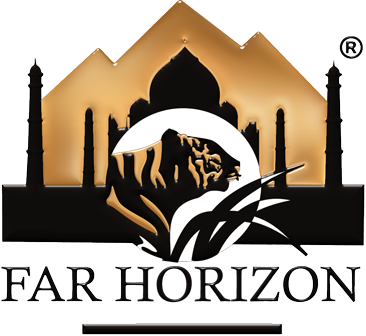Rajasthan with the Thar Desert Safari
more_vert
Introduction
Trek Grade: Easy
Far Horizon offers, along with a visit to the historical city of Delhi, the Taj Mahal in Agra and the forts and palaces of Jaipur, a deeper journey into the desert and its people. Meet the simple yet colorful tribal people of this land, living simple lives in their mud huts with thatched roofs and practicing their arts and crafts. This, along with a visit to the colorful desert festivals, with its gathering of animals for trading, religious processions and pilgrimages to holy temples, completes the journey through glorious Rajasthan.
Tour Highlights
- 14 days tour with visits to UNESCO World Heritage sites including the iconic Taj Mahal, Amber Fort, Qutab Minar
- Home hosted dinner with the local family
- Visit of Royal Grand Palaces and Forts of Rajasthan in Jaipur, Jodhpur and Rajasthan
- Thrill of seeing the Royal Bengal Tiger in the Ranthambore National Park and the large flocks of Damosiele Cranes at Jamba
- Interaction with the Bishnoi tribal people in the Thar Desert of Rajasthan at Jamba
- Visit Elephanta Caves in Mumbai
- Prices on request
Destinations Covered
Delhi
The City of GloryDelhi is said to be one of the oldest existing cities in the world, along with Jerusalem and Varanasi. It is the Capital Territory of India and a modern-day citadel that's dotted with ancient monuments.
History and Culture
Legend estimates it to be over 5,000 years old. Over the millennia, Delhi is said to have been built and destroyed 11 times. The oldest alleged incarnation of the city shows up in the Indian mythological epic Mahabharata as Indraprastha.
Agra
The Majesty of the TajAgra is the city of the Taj Mahal, in the north Indian state of Uttar Pradesh. Agra has three UNESCO World Heritage sites, the Taj Mahal, Agra Fort in the city and Fatehpur Sikri on the outskirts of Agra. There are also many other buildings and tombs from Agra's days of glory as the capital of the Mughal Empire.
Ranthambore
The Great Wildlife AdventureJaipur
The Pink CityJaipur is the largest city in Rajasthan and was built in the eighteenth century by Sawai Jai Singh as India's first planned city. Jaipur is a major tourist attraction amongst Indian as well as international travellers. Jaipur is often called the Pink City in reference to its distinctly colored buildings, which were originally painted this color to imitate the red sandstone architecture of Mughal cities. The present earthy red color originates from repainting of the buildings undertaken for a visit by the Prince of Wales in 1876.
Jodhpur
A Rhapsody in BlueLocated on the foothills of a sandstone hillock, the city of Jodhpur seems like an oasis in the vast desert. The city is known by three names as the "Sun City" for the bright, sunny weather it enjoys all year. It is also referred to as the "Blue City" due to the vivid blue-painted houses around the Mehrangarh Fort.
Jamba, Thar Desert
The Serene Desert LandscapeIn the distant reaches and vast expanse of the Thar Desert, far off the beaten tourist trail is the unique village called Jamba. It is located in Phalodi Tehsil of Jodhpur district in Rajasthan, India. This is a perfect place to get away from the big cities and enjoy the solitude of the desert life.
Mumbai
The City of DreamsIndia’s largest port, its commercial and industrial center, as well as fashion capital and heart of Bollywood (India’s thriving movie industry), Mumbai is an endlessly fascinating hive of activity. A jumble of captivating contradictions, grand colonial architecture rubs shoulders with chaotic bazaars, trendy restaurants, exclusive boutiques, slums and shanty towns, all interspersed with beautiful, tropical palm trees. A shopper’s haven, this bustling cosmopolitan metropolis offers anything from pavement stalls and ancient markets to glitzy malls and designer outlets.
Detailed Itinerary
- Day 1 Arrive Delhi
- Day 2 Delhi
- Day 3 Delhi – Agra (approx. 4 hours’ drive)
- Day 4 Agra – Ranthambore (Train from Bharatpur at 1550/1802 hrs.)
- Day 5 Ranthambore
- Day 6 Ranthambore – Jaipur (approx. 4 hours’ drive)
- Day 7 Jaipur
- Day 8 Jaipur – Jodhpur (approx. 6 hours' drive)
- Day 9 Jodhpur – Jamba (approx. 3 hours’ drive)
- Day 10 Jamba
- Day 11 Jamba
- Day 12 Jamba – Jodhpur & flight to Mumbai
- Day 13 Mumbai
- Day 14 Departure























